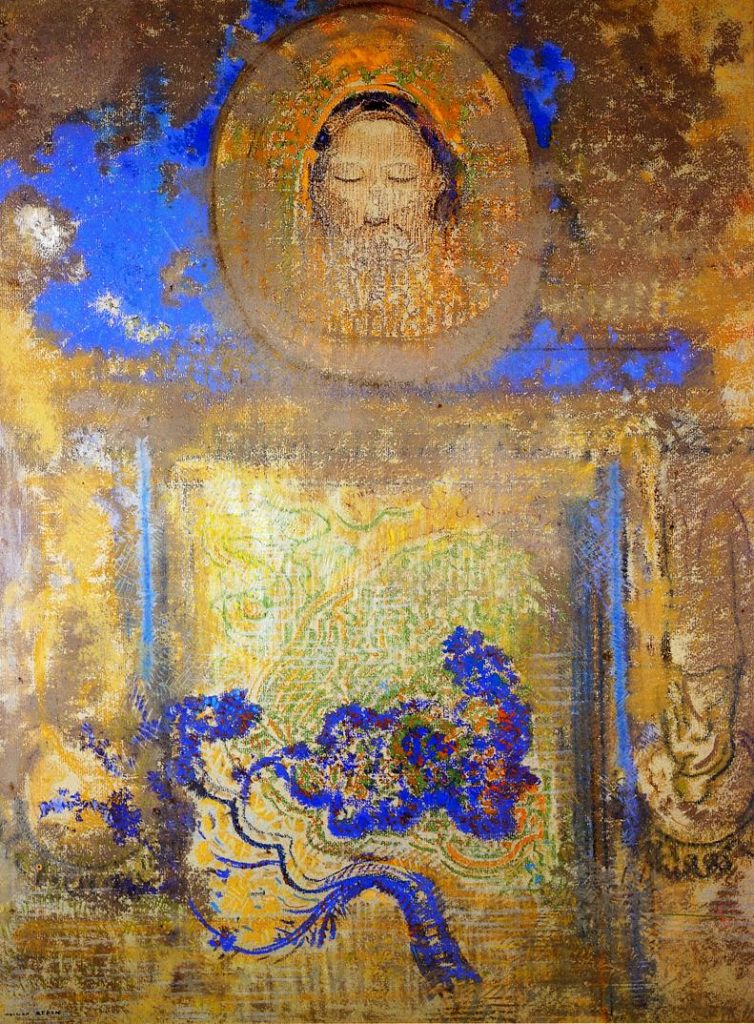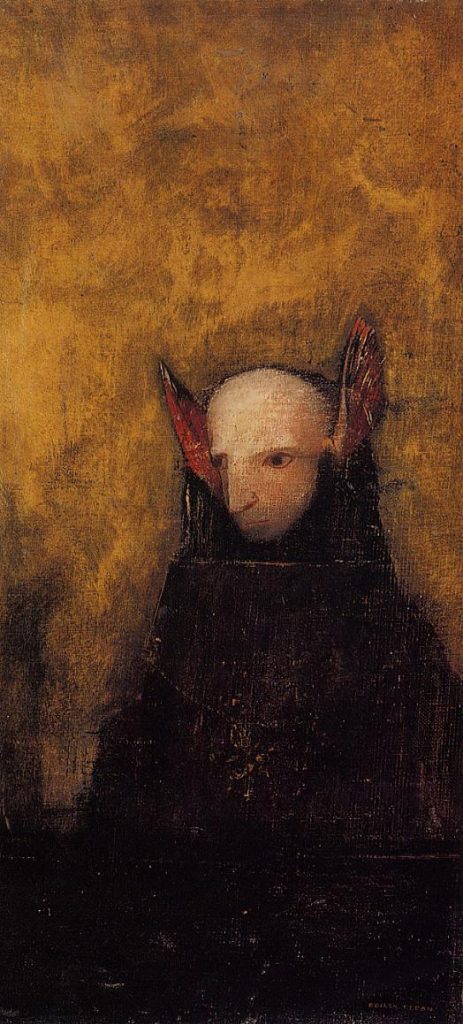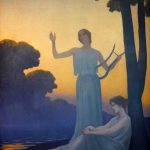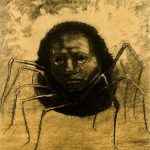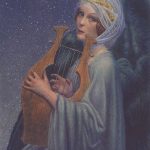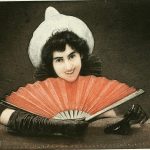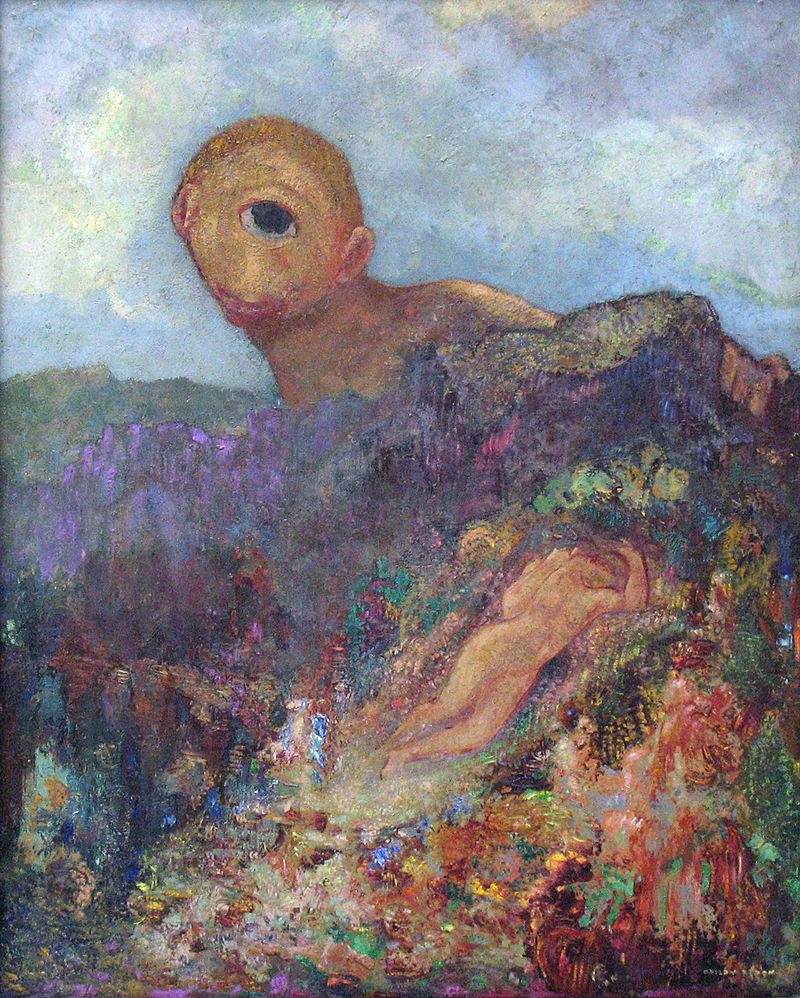
Odilon Redon (1840-1916) was a French Symbolist painter, printmaker, and draughtsman known for his unique and imaginative works that straddled the boundary between the representational and the abstract. He is often associated with the Symbolist and Post-Impressionist movements and is celebrated for his exploration of the mysterious and dreamlike aspects of art. Here are some key points about Odilon Redon:
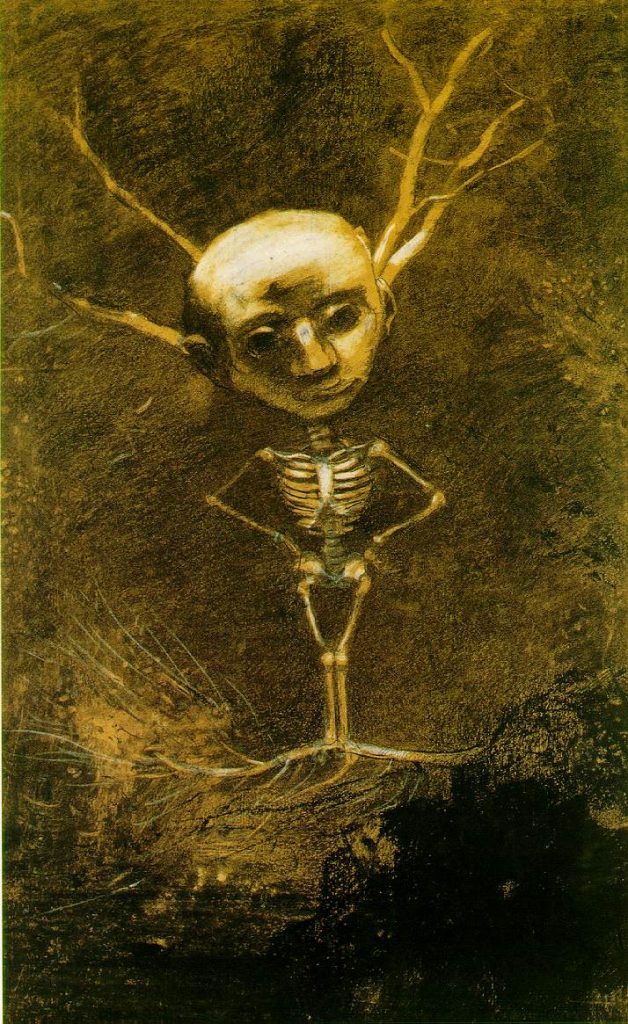
- Early Life and Education: Redon was born Bertrand-Jean Redon in Bordeaux, France, on April 20, 1840. He adopted the name “Odilon” later in life. He initially studied architecture but soon turned to art, attending the École des Beaux-Arts in Paris.
- Artistic Evolution: Redon’s early works were characterized by a fascination with the macabre and the fantastical, often featuring themes of death and the grotesque. He gained recognition as a printmaker with his series “Noirs” (black drawings) in which he explored dark and mysterious subjects using charcoal and lithography.
- Shift to Color: In the 1890s, Redon shifted his focus to color and began to create vibrant pastel drawings and paintings. This marked a significant departure from his earlier dark and monochromatic works. His use of color became a defining feature of his later art.
- Symbolist Movement: Redon is closely associated with the Symbolist movement, which aimed to convey emotions, ideas, and spiritual themes through symbolism and allegory. His works often featured dreamlike and symbolic imagery that transcended literal representation.
- Influence of Literature and Music: Redon was inspired by literature and music, often drawing on the works of poets like Edgar Allan Poe and writers like Gustave Flaubert. His art frequently incorporated themes of mysticism and the supernatural.
- Friendship with Rodin: Redon had a close friendship with the renowned sculptor Auguste Rodin. Their artistic exchanges and collaborations influenced each other’s work, with Redon’s drawings and lithographs serving as studies for some of Rodin’s sculptures.
- Later Recognition: Redon’s work gained wider recognition in the late 19th and early 20th centuries. He exhibited at the Salon des Indépendants and the Salon d’Automne in Paris and became influential in the development of Surrealism and modern abstract art.
- Legacy: Odilon Redon’s art has left a lasting impact on the development of modern art. His use of color, exploration of the subconscious, and his ability to evoke emotions through symbolism have influenced subsequent generations of artists, including the Surrealists.
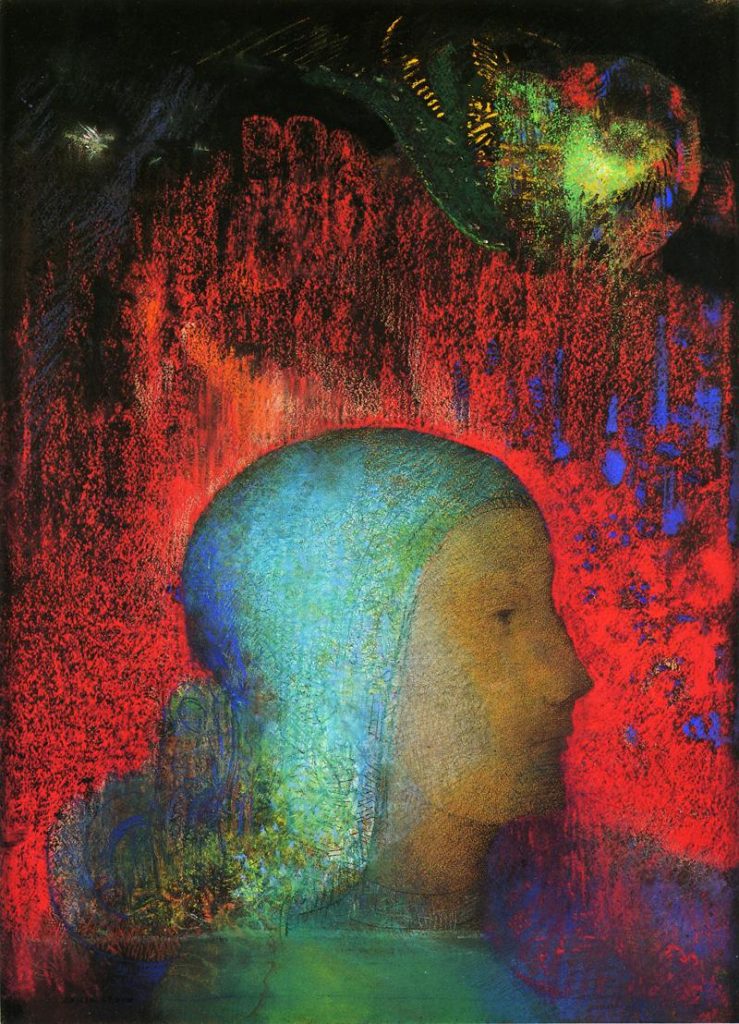
Odilon Redon passed away on July 6, 1916, in Paris, leaving behind a body of work that continues to be celebrated for its visionary and imaginative qualities. His legacy endures as an important figure in the evolution of modern art, and his works are admired for their ability to evoke a sense of wonder, mystery, and introspection.
